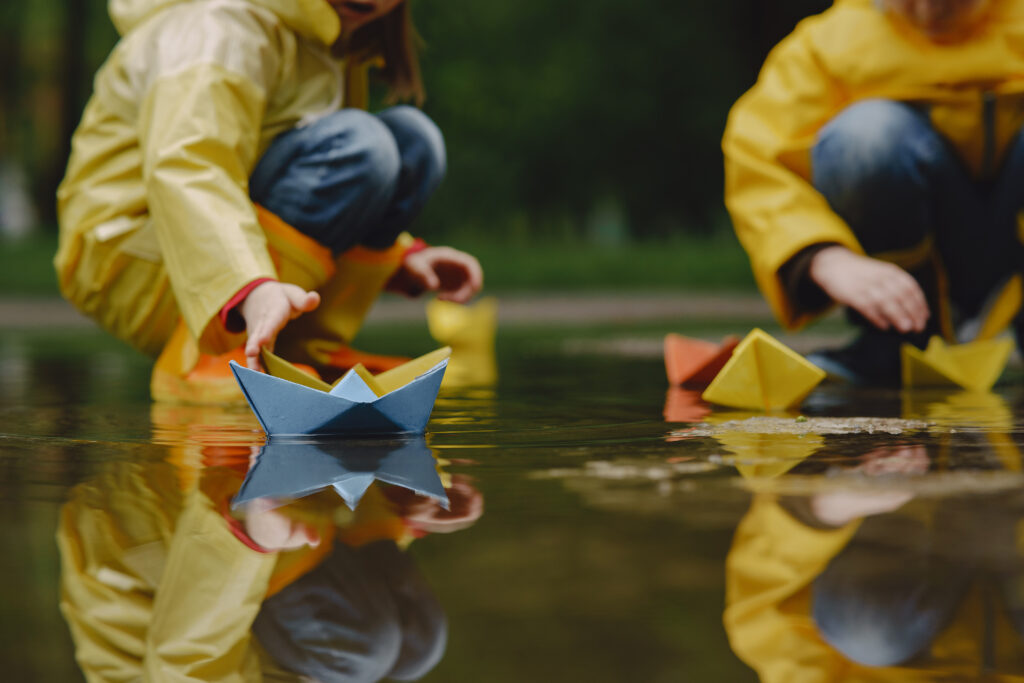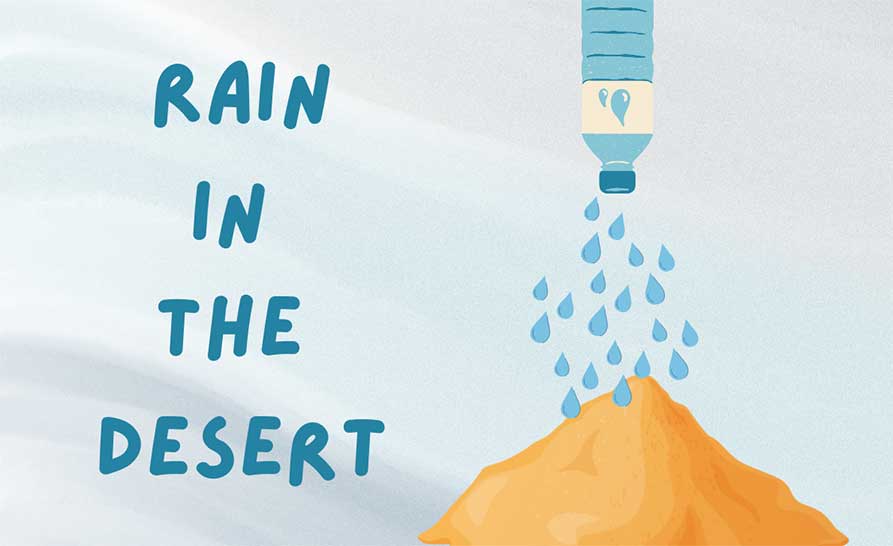A lyrical story about waiting for the rain to come to an isolated Aboriginal community. Tension in the community builds as the rain clouds thicken and grow dark. Everybody waits. When will the rain come?

Big Rain Coming
(9780143500452)
Written by Katrina Germein
Illustrated by Bronwyn Bancroft
Published by Picture Puffin
Theme/topic: Days of the week and Weather impacts
Big Rain Coming by Katrina Germein is a beautifully written and atmospheric story that captures the anticipation of rainfall in a remote Australian Indigenous community. Throughout the week, the land remains dry, and the people wait patiently for the relief that the rain will bring. The book helps students explore observable weather changes and how they impact the environment and daily life (ACSSU004 – Foundation Year; AC9S1U02 – Year 1, Science). It also help kids compare and recognise the extensive knowledges of daily and seasonal changes in weather patterns and landscape held by First Nations Australians.
The timely, predictable text encourages children to recognise and describe the sequence of the days of the week, supporting their understanding of time (ACMMG007, AC9MFM02 – Foundation Year, Mathematics). With its rich language and evocative illustrations, Big Rain Coming fosters curiosity about weather patterns and seasonal changes while promoting discussions about patience, resilience, and connection to the land.
Curriculum Alignment:
- These AC codes are suggested purely based on the book’s content and are provided for reference only.
AC9MFM02 9.0 (Mathematics Foundation): Sequence days of the week and times of the day including morning, lunchtime, afternoon and night time, and connect them to familiar events and actions
• ordering images of daily events on a string line across the room, and justifying the placement by referring to morning, lunchtime, afternoon, and night time
distinguishing between the days of the school week and weekends, and recognising that the days of the week form a sequence that repeats, with Monday always following on from Sunday
• sequencing the events from a story in the order in which they occurred using language like, “This happened first” then “This happened next”
• creating, interpreting and discussing classroom rosters; for example, a roster for watering the classroom garden and asking, “Who watered the garden yesterday?” or “Whose turn is it today?”
• creating a pictorial diary to show the important events that happen on the various days of the week
AC9S1U02 9.0 (Science Year 1): Describe daily and seasonal changes in the environment and explore how these changes affect everyday life
• making and recording observations of phenomena such as changes to weather, seasonal changes to plants such as colour or dropping of leaves, and growth of flowers or fruit
• noticing how daily weather indicators and seasonal patterns help us to make plans for activities in our daily lives
• investigating how seasonal changes affect plants and animals, including animals that hibernate and migrate
• investigating how changes in the weather affect plants and animals, including humans
• exploring how people make clothing choices using predictions of weather or knowledge of seasonal changes
• recognising the extensive knowledges of daily and seasonal changes in weather patterns and landscape held by First Nations Australians
• exploring how First Nations Australians’ concepts of time and weather patterns explain how things happen in the world around them
ACMMG007 8.4 (Mathematics Foundation): Compare and order duration of events using everyday language of time
• knowing and identifying the days of the week and linking specific days to familiar events
• sequencing familiar events in time order
ACSSU004 8.4 (Science Foundation): Daily and seasonal changes in our environment affect everyday life
• learning how Aboriginal and Torres Strait Islander Peoples’ concepts of time and weather patterns explain how things happen in the world around them (OI.3, OI.5)
• linking the changes in the daily weather to the way we modify our behaviour and dress for different conditions, including examples from different cultures
• investigating how changes in the weather might affect animals such as pets, animals that hibernate, or migratory animals
Resources
Single Activities
Articles
-

6 Tips for Parents to Engage Storybooks in Children’s Learning Journey
Discover effective ways for parents to engage in their child’s primary school learning journey. Explore how storytelling at home can enhance Australian home learning and foster parental involvement.
-

Science Comes Alive! How Stories Help Young Learners Explore Weather
Explore three captivating children’s books with hands-on activities that introduce young learners to the wonders of weather and its impact on the world around them. These beautifully illustrated stories bring rainy days, clouds, and seasonal changes to life.





Leave a Reply